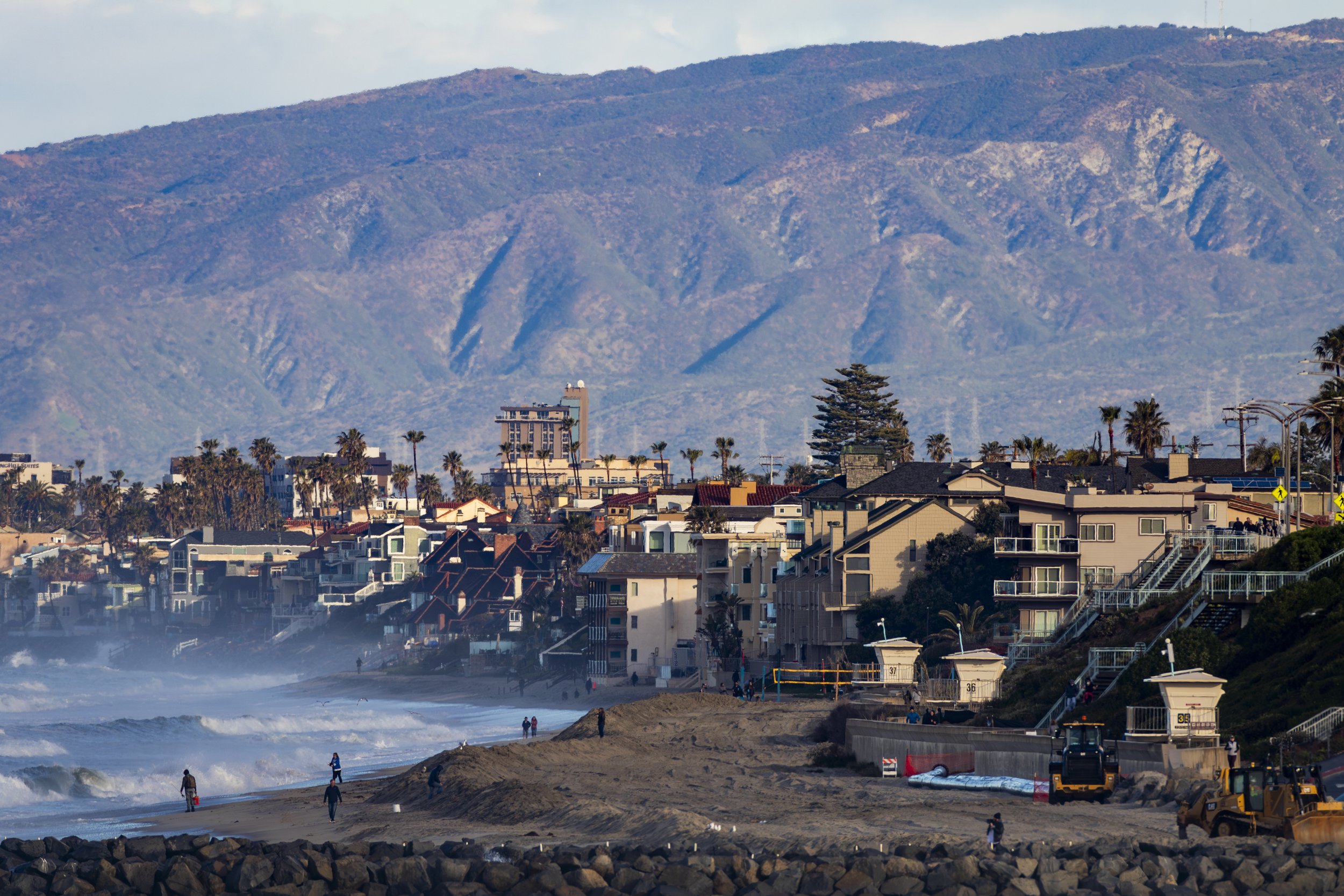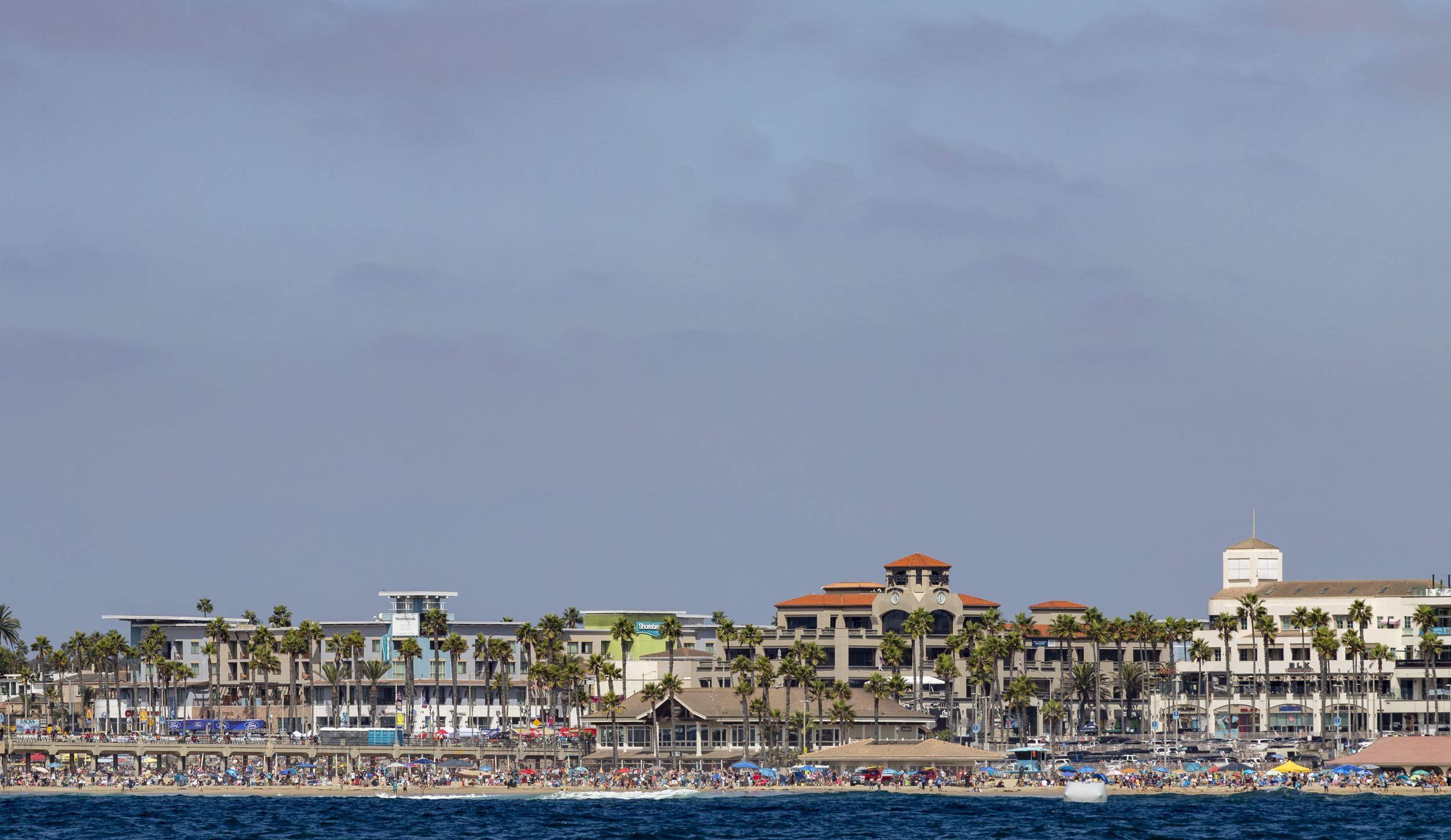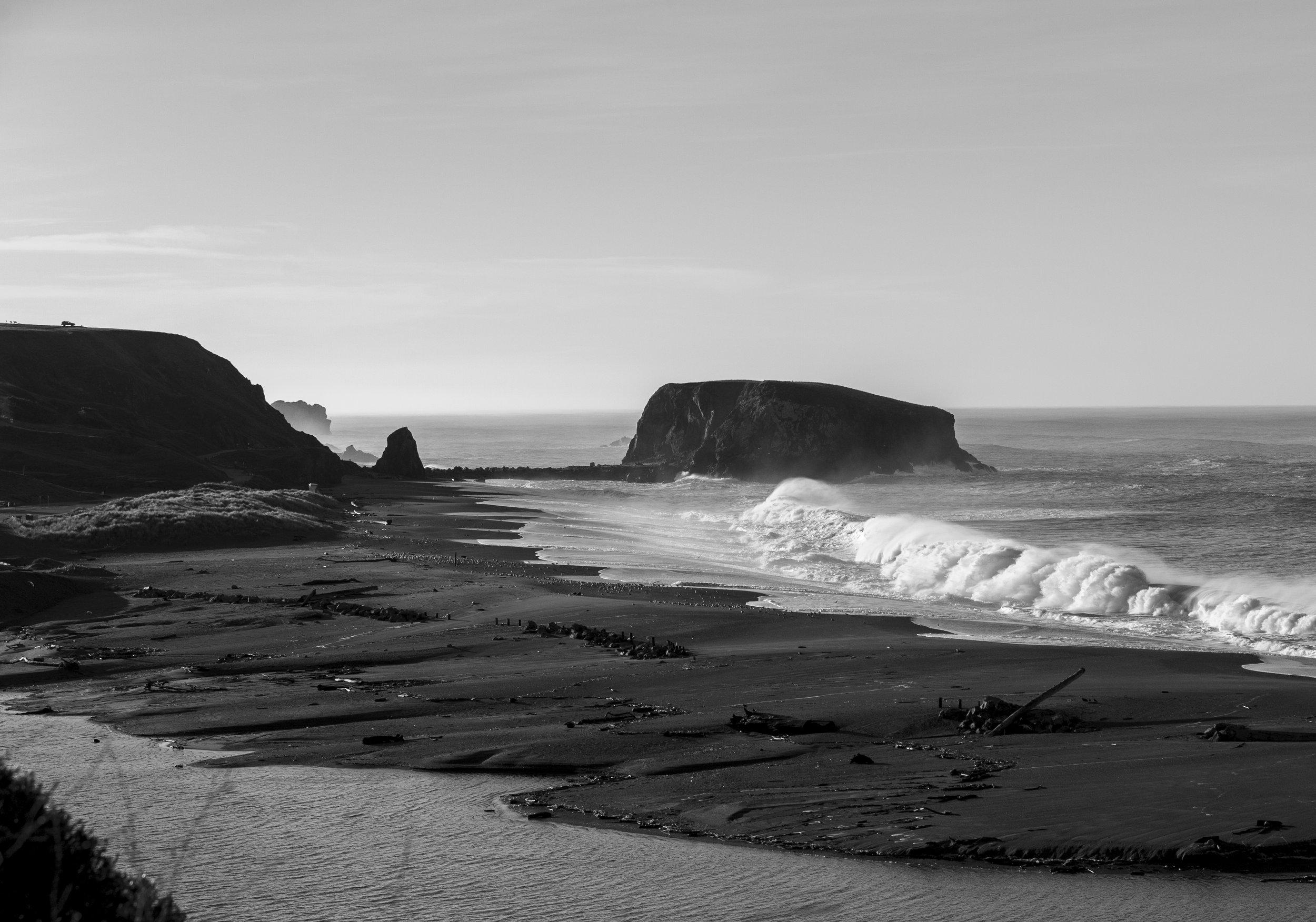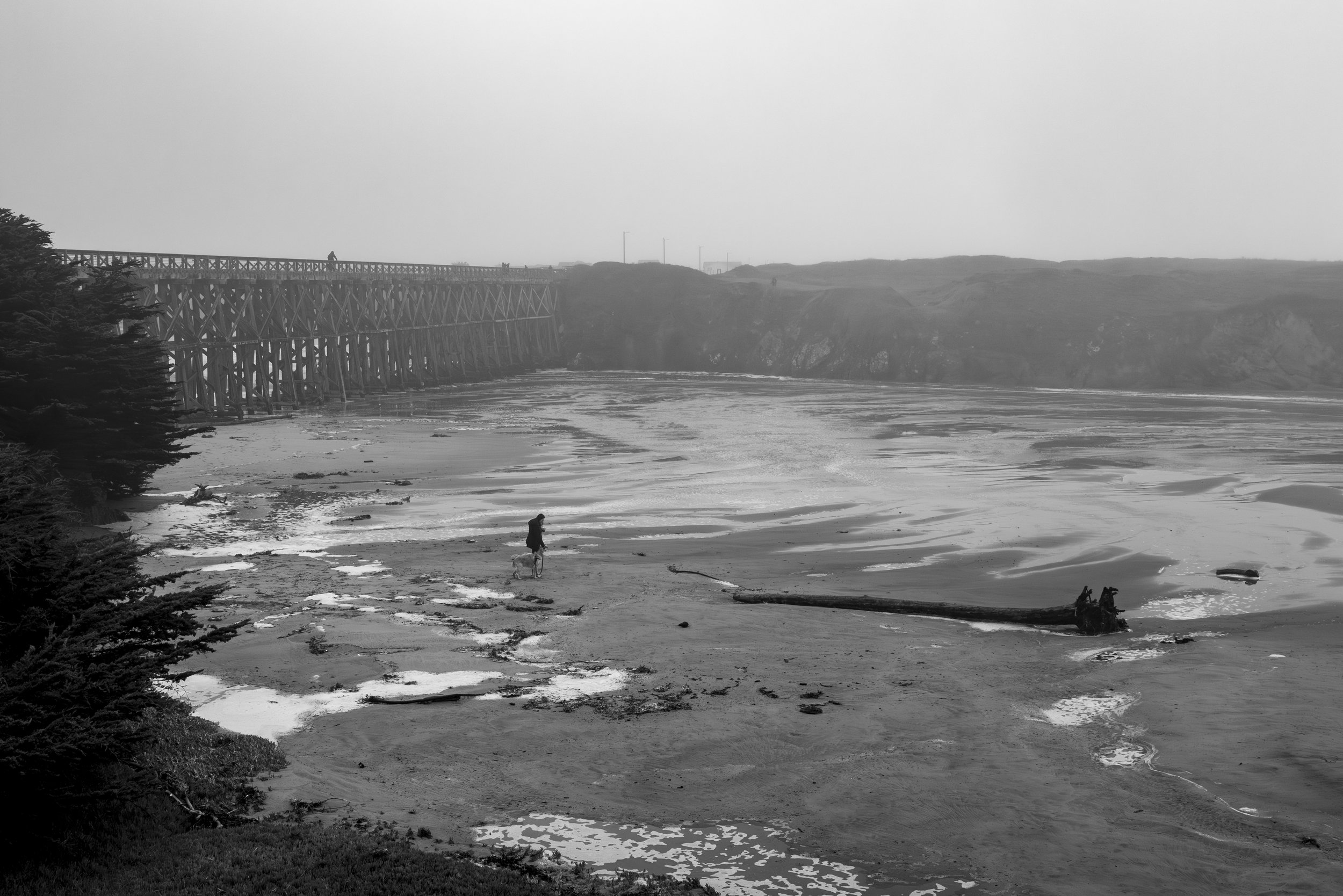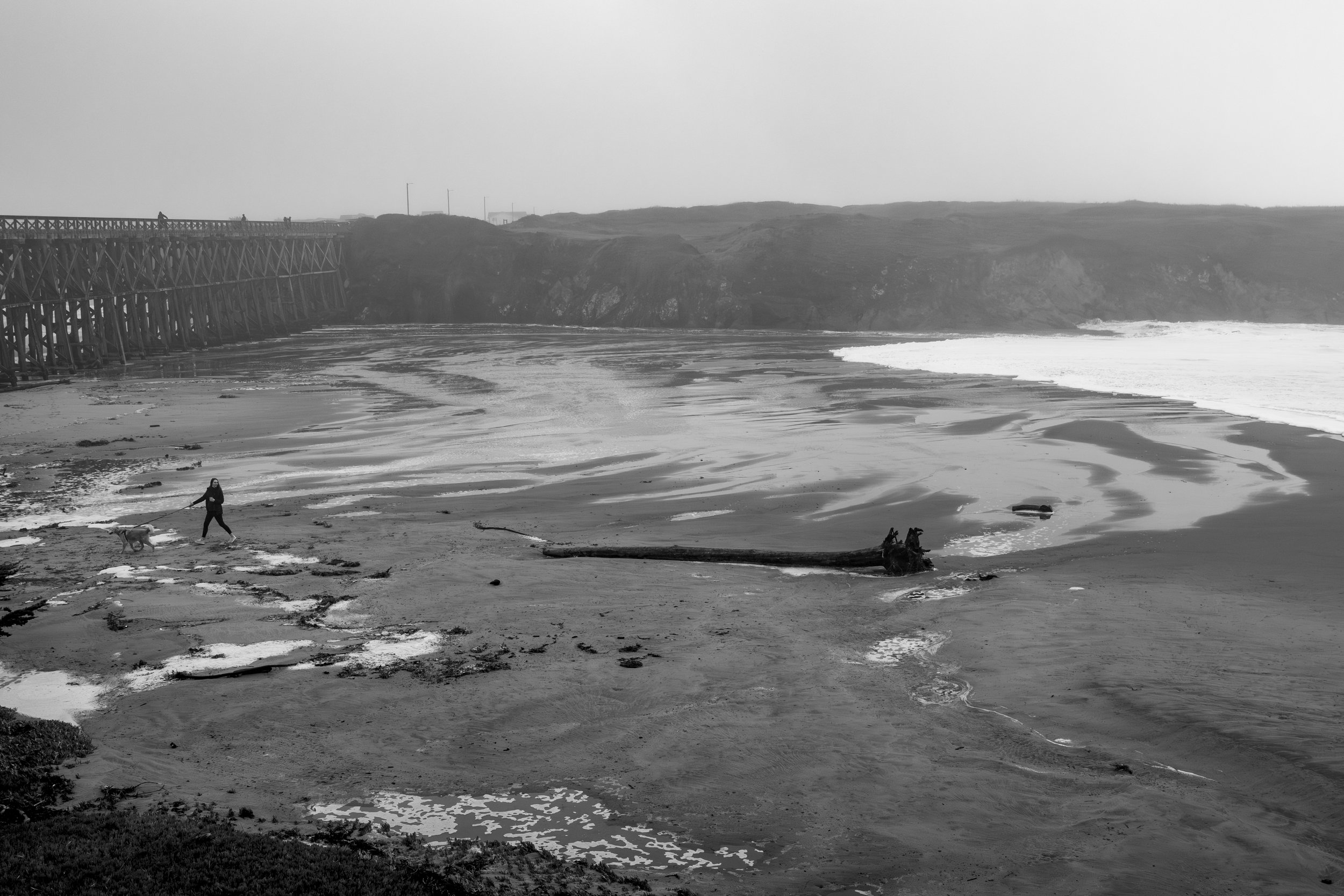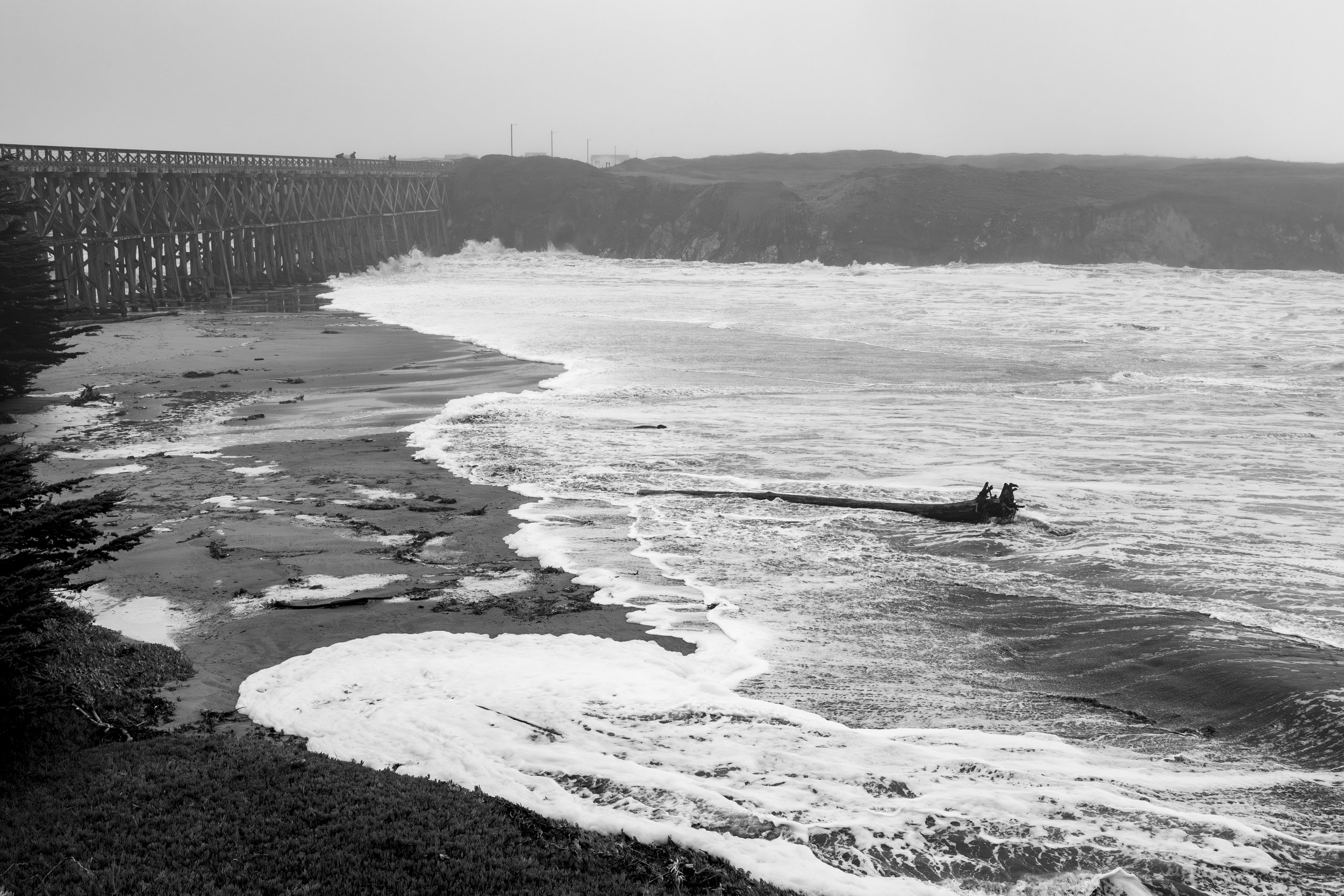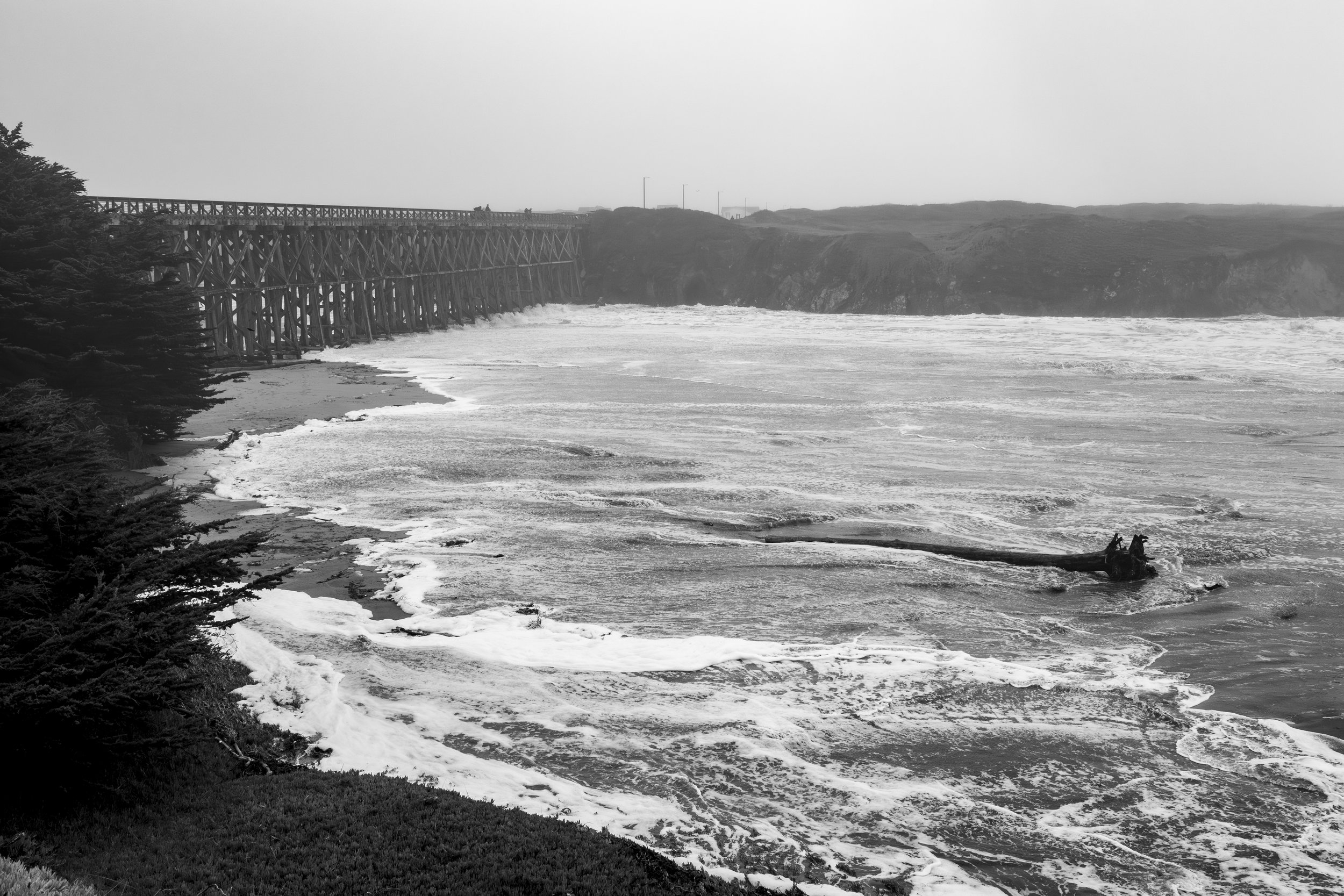California: North to South
The natural world supersedes any borders.
Draw a perpendicular line on a map through mountains formed by crushed tectonic plates, and you still have to scale the vertical features which inhibit you. Tsunamis find destruction by gravity and displacement, not by which street corner they sweep. Ocean waves break as their energy opposes the progressively shallower contours of the ocean floor which governs their shape. You may have a fence between your house and your neighbor, but when disaster strikes, both houses become flammable, and feed one single fire.
If you end up in a rip current at the USA/Mexico border (pictured below) the swell direction, tide, etc, will decide your direction of travel. Several lifeguard agencies will actually respond to the USA-Mexico border to come help you; City of Coronado Lifeguards, City of Imperial Beach, and California State Parks who all respond to the southern most portion of the state. (There may also be a couple non-lifeguard agencies questioning aspects of your travel plans if you are swimming here, but thats for a different story.)
In California, The Lifeguard Project has taken me from the border of Mexico to the border of Oregon, which has led to awareness about “Lifeguard Borders”. Southern California is a coastal desert which gradually transitions into a warm temperate rainforest that begins just south of San Francisco. The further north you travel sand turns to soil, rocks and cliffs grown in size, sun turns to fog, palm trees turn to redwoods, and the ocean turns into a (more) vicious beast. Water temperatures range from 72 to 45 degrees Fahrenheit (7 to 22 centigrade).
Amongst California’s extreme North-to-South diversity, one constant exists; Lifeguards. With one variable; thickness of wetsuit.
No matter where you are in this wild world other things also bind us. A human still cannot breathe underwater, and in an emergency, brain cells still begin to perish in 4-6 minutes without oxygen. Anywhere there is water the universal issue of drowning remains. The feeling of a critical rescue, or providing someone’s second chance at life through CPR remains the same. The looming danger of lifeguard’s performing their duty is ever present, regardless of where you are geographically, it simply takes different shapes. Californias ever changing landscape creates very distinct challenges for lifeguards year round.
Add to the equation tourism, travel, and the evolving internet landscape of social media. All parts of California are an easily accessible international destination especially after the pandemic.
California, the most populated state in the USA with nearly 40 million residents, has thousands of miles of ocean and inland lake coastline, nearly 200,000 miles of rivers, and over 1.34 million swimming pools. [Koon, W. (2023) pg. 99]
It is no mystery that the majority of people who come to California make their way to the ocean as some portion of their visit. Lifeguards exist in all of those places so that everyone can return back home after they enjoy the beach safely. (As we continue through these images, please mind that everything was also photographed during the winter.)
South
Southern California beaches are characterized by lines of houses and hotels in virtually every last square inch of coastal land. There are also Surfline cameras on most beaches now with angles that provide the users with information and accessibility to the surf and coast year round. This information has drastically changed the response to swell events for the ocean oriented community.
There are some exceptions, but besides the pre-existing infrastructure, the summer season’s influx of tourists almost triples the population in certain areas. For this reason, you see lines of lifeguard towers attempting to mimic the necessary defense mechanism to accommodate thousands of people at the beach at one time.
Most people think we have “gone home for the summer“ as they see towers emphasizing “NO LIFEGUARD ON DUTY, KEEP OFF“. This is true for some, however, lifeguards are always around in California, no matter where you go. There are fewer lifeguards on duty and primarily operate in a vehicle for a larger stretch of beach, simply making them more elusive.
Central
The argument of where the central coast really starts, and finishes is open to interpretation, depending on where in California you live. If you looked at California on a map and precisely measured the distance, it would seem that the center portion of it could still be close to San Francisco. Whatever your take on this is, it can also be identifiable by certain lingos and sayings from those who live in “Nor-Cal” or “So-cal“ or just prefer to say that they are from “the bay area” because there are way too many places to mention. The San Francisco Bay is approximately 12 miles wide by 60 miles long and is the America’s largest pacific estuary. (And yes lifeguards respond there too).
But the reality is that California is MASSIVE, possesses elaborate water features, and continues north far beyond the Golden Gate Bridge and the central coast. There are still massive populations, colleges, pristine surf locations, and some of the most popular scenic highways. Not to mention the Monterey bay, which is about twice as deep as the Grand Canyon. The lifeguard towers become further and fewer between in these areas, but the Lifeguards… You guessed it, are still there.
In San Francisco exists the only National Park Service Lifeguard operation in California. A tight knit group of individuals which make up a small but important rescue team that protects the Federal Land on both sides of the Golden Gate Bridge; Ocean Beach and Stinson Beach in the Marin Headlands. They will be featured in a different story since there is a lot of hidden gems within their operation, consider this a sneak peek. (Also they will be hiring soon).
North
The northern outposts past San Francisco slowly began seeing the value of Lifeguards within the last several decades. Drownings in these areas occur in the highest rates in California. The fact that the above photo has a lifeguard tower is a feat of those who have advocated for the profession before and made great strides through policy and passion to promote lifeguarding here. This is an entire story in and of itself, and there are currently full books out on this subject written by lifeguards. (Stay tuned).
Lets keep it simple. All I ask is that you take a closer look at the image above. Notice the size of the lifeguard tower which pokes beyond the bluffs in the left upper portion of this photograph and the vehicle perched on the top left side of the hill. Now compare the size difference to the shore break, and how far the surge or wet sand can reach past, luckily there isn’t anyone walking on the beach this day. Goat Rock precedes it reputation of tragedy amongst lifeguard stories and history. It is one of the most treacherous beaches for drownings in the northern regions of California.
The good news is that there are lifeguards in this area permanently now, which wasn’t always the case. The far sections of Northern California will have their own spot in this project at a later date.
A simple yet effective example or lifeguarding the “north” is the above sequence of a dog owner walking unsuspectingly onto the beach during a large swell event in Fort Bragg, CA. In the first image you can see the large log, shiny wet sand, and lingering sea foam which indicates that the water level was threatening that area moments before. As the sequence progresses and another set of waves arrives, the large surge rapidly pushes up onto the sand with enough force to move the log. Luckily the dog owner was able to notice and escape the situation by retreating to higher ground. Not to worry both of them were ok.
If the same circumstance were to occur on a rock while looking at tide pools, or an area without higher ground, or her dog was off leash… the situation could have gone horribly worse. The dog and its owner could have easily been swept off of their feet or back into deeper water. Often times people drown by chasing in after their loved one or pet in these areas because there is no immediate help, and 911 takes some time to arrive.
Contextually, this is a cold winter day in Fort Bragg, CA. Just one example of HOW bad things can happen quickly, with ease, year round.
This is exactly what lifeguards are trained to observe before it happens. Lifeguards anticipate and prevent with a simple conversation based on their local experience and knowledge. The reality of northern California is that often the victims of critical injury are simply not near a lifeguard, don’t read a sign, or even disregard these dangers with having been told about them prior.
Warning signs are placed and used but sometimes there are just too many signs and regulations, other times people don’t realize the inherent danger presented, or they actively disregard the warnings put in place.
The photo above was taken just as myself and a lifeguard had pulled up to this popular arch feature in Mendocino. The perception we had was that a massive wave had actually broken over top of this arch earlier in the day. These beachgoers had disregarded the caution tape and warning signs in place which were actively blocking off the arch. The lifeguard was able to immediately utilize the public address speaker system on the vehicle to immediately warn them off of the cliff. If this situation would not have been corrected, one can imagine the events to follow based on this section of coastline.
As we finish our traverse to the northern most reaches of California, when can realize the vast diversity which breeds challenges to lifeguarding. Most people have no idea that lifeguards work in the populated areas of Southern California during the winter, let alone the furthest outposts north.
Amongst all the potential for tragedy in these areas, there exists the positive. The beauty of the natural attractions of the ocean and California are meant to be enjoyed, not understood. With a brief awareness and an open mind to safety, everyone can become a part of this incredible portion of the world.
Where there are lifeguards, there are junior lifeguards. There is currently a junior lifeguard program in Crescent City the northern-most junior lifeguard program to exist in California. If we are going to expect to inspire and educate people to be safe in these environments, and to become the future rescuers of these environments, we must advocate for the profession now. We have to have the right steps in place to ensure their safety and the right ways to educate the public to ensure that they have a good time anywhere in California.
Lifeguards are doing their best to maintain these long stretches of beach, but it is simply not sustainable if there isn't advocacy to match population and travel increase. This is for the greater good of everyone. This brief story simply showcases an awareness to the diversity of California and the behemoth of responsibility that rescuers are currently stewards of. Stay tuned as each of these places deserve they're very own story.
Thank you for reading.




